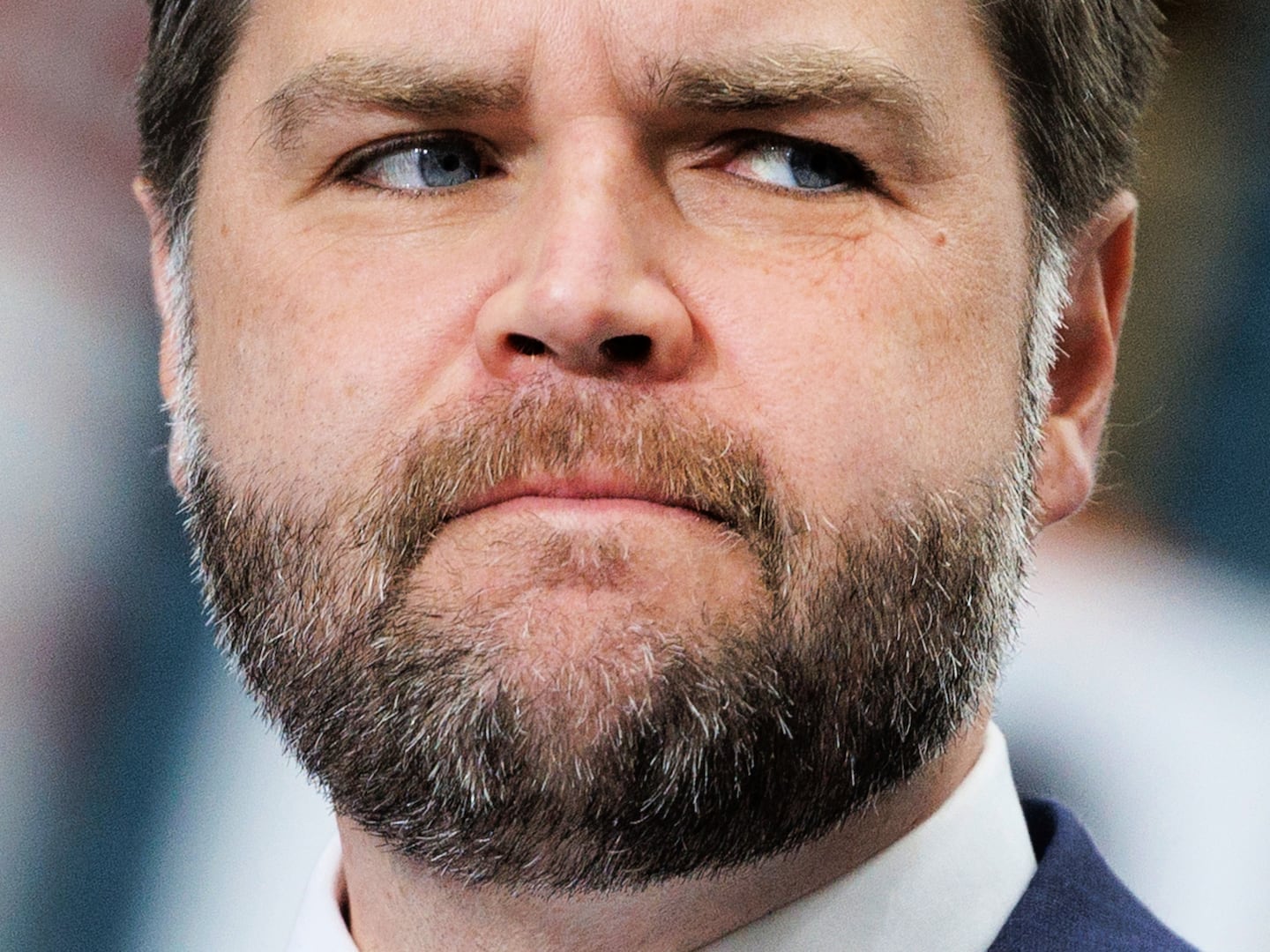
In June, New York magazine asked the Class of ’09 to characterize their mental outlook. Seven percent identified themselves as pessimists and 81 percent placed themselves in the optimist camp. Drilled for specifics, a scant 2 percent said they believed their lives would be worse in five years, while a whopping 95 percent saw greater things ahead—a strong indication that some self-professed pessimists aren’t so gloomy after all. Indeed, looking on the bright side has become all but mandatory in our culture, Barbara Ehrenreich argues in her new book, Bright-Sided: How the Relentless Promotion of Positive Thinking Has Undermined America.
“Well, Joel Osteen has a very special relationship with the deity. He just has to say things like ‘Thank you, God, for blessing me with the best parking spot.’ And he gets it. He also can get good tables in restaurants, using the same method.”
Ehrenreich has been skewering cherished platitudes for years—from the popular notion that feminism ruined the nuclear family (in her 1987 book The Hearts of Men) to the idea that the poor are poor because they refuse to work, a policy plank whose hollowness she exposed in her bestselling Nickel and Dimed: On (Not) Getting By in America. Now that she’s trained her sights on optimism, Ehrenreich attempts to show how Americans are simply too damned cheerful, and how this well-intended but ultimately misguided optimism has shaped the mortgage crisis, our media, even our religion.
When I reached Ehrenreich by phone at her Virginia home, I asked her about a paradox raised in Bright-Sided’s introduction. Americans stress positive thinking more than any other culture, and yet by measures of self-reported happiness, we’re not faring so well. We rank low compared to the Danes, the Dutch, even the Malaysians. “If there has been a decline in happiness in America, and we don’t shape up well compared to other countries, including, weirdly, Finland, which I always thought of as very dour,” Ehrenreich said, “it relates to all this work we do to make ourselves be more positive. Positive thinking is imposed on people in a lot of settings. If you’re in the typical corporate workplace, you are exhorted to be positive. You’re told nobody wants to be around a negative person—which could mean somebody who just raises questions now and then, questions like ‘Isn’t our subprime exposure dangerously large here?’ People were fired for that in ’05 and ’07, right up until the end of the housing boom. You just could not say something like that.”

Ehrenreich found herself particularly struck by “big-tent” convocations, for which employers buy stacks of motivational books and bring in speakers like former New York City Mayor Rudy Giuliani to tell their workers how to be more positive. She sees the 1998 bestseller Who Moved My Cheese?, which essentially argued that job loss is nothing to fear, as a prime example. “What really went on here is that companies began picking up on this motivational industry in the 1980s, precisely when the age of layoffs begins,” she said. “Massive layoffs are a reason to bring in motivational speakers. That’s a reason to give copies of Who Moved My Cheese? free to your workers. Because you don’t want them complaining. You want them to be accepting of their increasingly insecure status. And you want the survivors of layoffs to work twice as hard.”
But hasn’t the positive thinking meme been around for a lot longer? Bright-Sided delves into the pop philosophy called “New Thought,” which enjoyed cultural traction from the turn of the last century through the Jazz Age. I asked Ehrenreich whether determined optimism isn’t a cyclical phenomenon, vulnerable to changes in fortune—New Thought, after all, which promised people any material thing they wanted as long as they thought hard enough, was effectively rendered ridiculous by the Great Depression. “Well, no,” Ehrenreich corrected me. “One of the biggest, most self-deluding bestsellers of this genre dates back to the Depression, and that’s Think and Grow Rich by Napoleon Hill. It sold well [in 1937] and it still sells. Hill thought thoughts had a magnetic power. And that’s exactly the kind of thinking that has gone on right up till now.”
Our conversation turned to the much ballyhooed “Law of Attraction” and Australian television producer and author Rhonda Byrne’s The Secret (2006), a book—and DVD—that reheated Hill’s argument and served it again. I asked Ehrenreich if she believed better history education, or greater public knowledge of the real historical precedents, would make people less susceptible to these thought trends, a happy idea Ehrenreich wasted little time dismissing as more wishful thinking on my part. “No, I don’t think it probably matters to most people,” she said.
Nowhere is this ambivalence toward source material more evident than in the Christian side of the positive thinking movement, she added. “Standard American Protestantism had always been either very ‘soft’ like Unitarianism, or rather grim and hellfire—the right-wing Jerry Falwell, Pat Robertson contingent. Then you began to get this whole branch of Christianity, represented primarily by the megachurches, where the message you get on Sunday is ‘You can have it, God wants you to have it, God wants you to have nice things. And it’s not even a matter of praying to God, it’s a matter of visualizing those things coming to you.’”
I asked Ehrenreich to elaborate on her thoughts about Joel Osteen, the hugely successful Houston pastor whose technique for finding parking spots provides fodder for one of Bright-Sided’s funnier moments. Ehrenreich, who visited Osteen’s Lakewood Church while researching the book—one of the church’s motivational slogans is “Discover the Champion in You”—responded drily. “Well, Joel Osteen has a very special relationship with the deity,” she said. “He just has to say things like ‘Thank you, God, for blessing me with the best parking spot.’ And he gets it. He also can get good tables in restaurants, using the same method.”
Positive thinking has so penetrated American culture because it’s posited as a reliable means to the good life. This caused Ehrenreich some discomfort as she looked out over the worshippers spilling out of Lakewood’s pews. “It was not a prosperous suburban congregation,” she said. “But Osteen was telling them that God wants you to have everything. Osteen particularly emphasized the need for a larger house than whatever you have now. So say you’re a person who has never had good credit, or who because of racial discrimination could not get a loan, and suddenly someone comes along and says, ‘We’ve got a mortgage for you! No down payment, no proof of income required, etc.’ It could be seen as a blessing from God. It’s just what the preacher promised.”
This line has not changed since the recession set in, Ehrenreich continued. She’s baffled. “What I’ve found in recent reporting is that a lot of people who took out subprime or adjustable rate mortgages are very ashamed,” she said. “They don’t want to talk about it. Because it looks like you were played. But it also, if you’re a very religious person, makes you think maybe you didn’t have God’s favor after all.” Positive thinking is Puritanism with a capitalist face, she believes. It places blame squarely on individual shoulders when larger factors play no insignificant part. “Positive thinking starts in the 19th century as a somewhat reasonable response to Calvinism,” she explained. “It said, No, we’re not all wretched sinners. We’re not all doomed to eternal torment. Look, it’s a big country, there are all sorts of opportunities. Then came Emerson’s message of self-reliance. By the 20th century instead of searching for sin, you’re searching for negative thoughts, and you’re trying to root them out.”
How did this quasi-Calvinism shape Ehrenreich’s experience with breast cancer? She laughed at the memory, but left little doubt her laughter was hard-won. “When I reached out for support and information in books and on the Web, I was astounded to be told, again and again, that I needed to be cheerful about my breast cancer,” she said. “Or that if I would only embrace it as a good thing that was happening to me, I would get better. And if I didn’t, I would die.” Being told, to borrow the words of Ari Fleischer, to “Watch what you say,” Ehrenreich found cruelly and unnecessarily burdensome: “I can’t tell you how much that infuriated me. It’s bad enough to go through those barbaric breast cancer treatments.”
Yet optimism makes for better copy, she continued, pointing out that scientific studies with a “null result”—those which show that mood has zero effect on your chances of recovering from major illness—rarely get airtime. I asked Ehrenreich if she’d found any pockets of principled resistance to this pressure to imagine the yellow brick road forever rising to meet us. Caring for small children, she said, is one area where we’ve stayed relatively sane. “You cannot do that on the assumption that everything is going to be OK,” she said. “No, you have to picture fratricidal stranglings. You have to picture terrible things.”
Childrearing habits aside, where to begin curing our collective delusion? Ehrenreich is adamant that she’s not advocating for moping around depressed: “It’s not a matter of becoming sadder. It’s a matter of becoming more realistic. And asking: What is actually happening in the world? How can we work to fend bad things off? Now some of the economists are saying that we’re headed for a second and bigger crash, as banks fail and more and more people default on their mortgages. Don’t tell me to be optimistic about that. Tell me what we’re doing to stop the reckless gambling on Wall Street. What are we doing to save people who are facing defaults? Do something. It’s not just all in our minds.”
Finally I asked Ehrenreich if there might be times when willful, defiant optimism can be a force for good, even for social progress. I tossed out the name Elizabeth Cady Stanton and mumbled something about how the first generation of suffragists didn’t live to see the 19th Amendment. If they’d been pessimists, would they have devoted years of their lives to a seemingly hopeless and thankless cause? Ehrenreich paused for a split second—she collects her thoughts faster than most mortals—then defined what she sees as the critical distinction: “There’s a difference between being willing to take on really difficult things and being overly optimistic. I’ve taken on many things that turned out to be extremely difficult. I didn’t take them on feeling, ‘Oh, I’m going to ace this.’ I took them on thinking I was just going to do my damnedest, whether it was some sort of outdoor adventure or an intellectual task. That’s a very different spirit. It’s not, ‘I’m going to win because I know I’m going to win because I’m wonderful and God loves me so much.’ It’s thinking ‘This is so important, I’m going to die trying.’“
For her next project, Ehrenreich is turning once again to a hardheaded theme—“writing about the poor in this recession.”
Plus: Check out Book Beast, for more news on hot titles and authors and excerpts from the latest books.
Megan Hustad is the author of How to Be Useful. She has written for The New York Times, Salon, Slate, and American Public Media's Marketplace.






